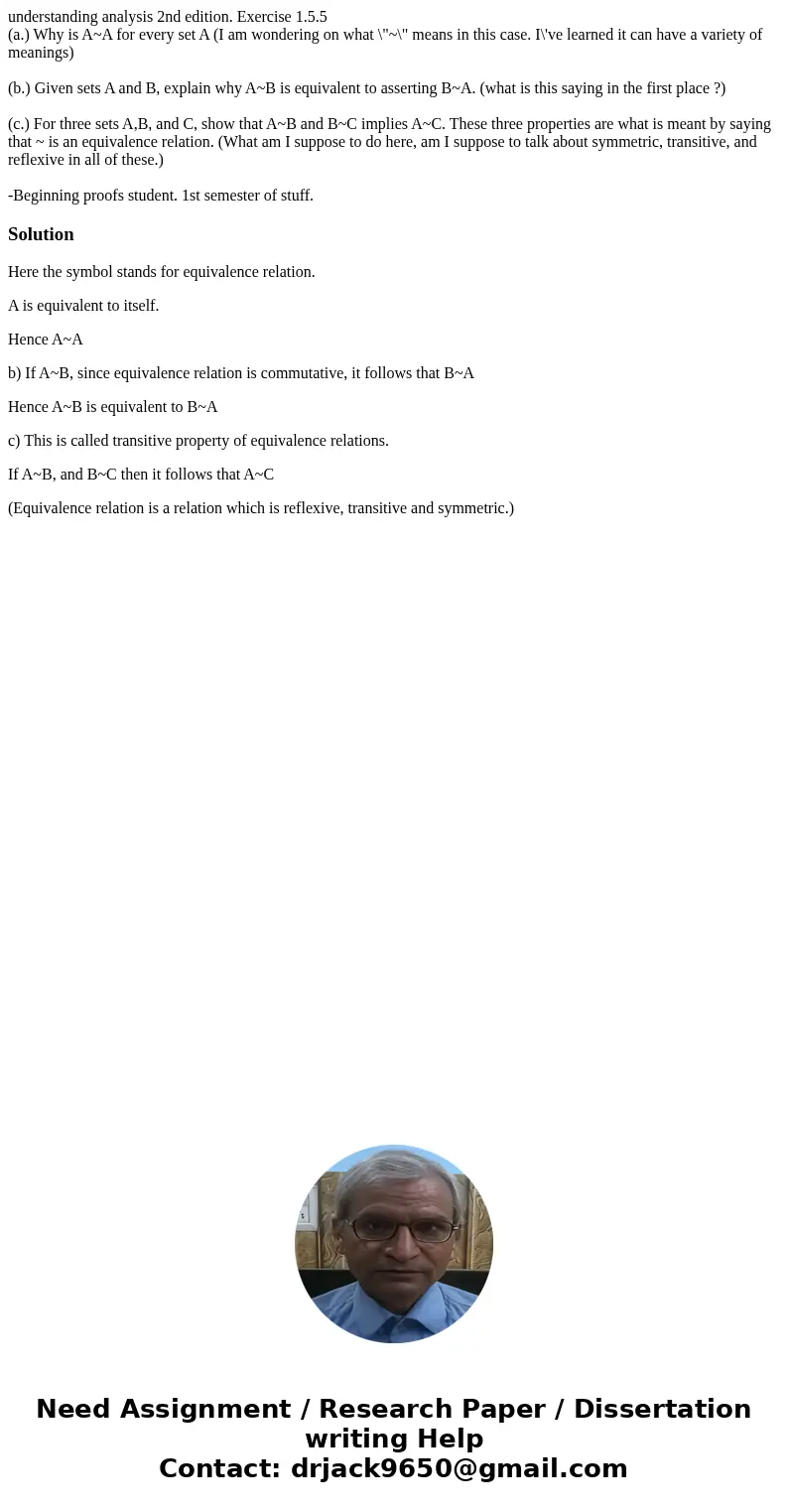understanding analysis 2nd edition Exercise 155 a Why is AA
understanding analysis 2nd edition. Exercise 1.5.5
(a.) Why is A~A for every set A (I am wondering on what \"~\" means in this case. I\'ve learned it can have a variety of meanings)
(b.) Given sets A and B, explain why A~B is equivalent to asserting B~A. (what is this saying in the first place ?)
(c.) For three sets A,B, and C, show that A~B and B~C implies A~C. These three properties are what is meant by saying that ~ is an equivalence relation. (What am I suppose to do here, am I suppose to talk about symmetric, transitive, and reflexive in all of these.)
-Beginning proofs student. 1st semester of stuff.
Solution
Here the symbol stands for equivalence relation.
A is equivalent to itself.
Hence A~A
b) If A~B, since equivalence relation is commutative, it follows that B~A
Hence A~B is equivalent to B~A
c) This is called transitive property of equivalence relations.
If A~B, and B~C then it follows that A~C
(Equivalence relation is a relation which is reflexive, transitive and symmetric.)

 Homework Sourse
Homework Sourse